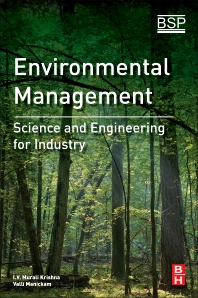Books in Environmental sciences
Books in Environmental sciences
The Environmental Sciences titles present critical research and insights into the complex interactions within natural ecosystems, climate systems, and human impacts on the environment. Covering areas such as biodiversity, sustainability, climate change, and resource management, these titles support scientific discovery and practical solutions for addressing today’s most pressing environmental challenges. This collection is essential for researchers, policymakers, and students dedicated to advancing environmental understanding and stewardship

Industrial Water Treatment Process Technology
- 1st Edition
- Parimal Pal
- English

Materials for a Healthy, Ecological and Sustainable Built Environment
- 1st Edition
- Emina K. Petrović + 2 more
- English

Networks of Invasion: Empirical Evidence and Case Studies
- 1st Edition
- Volume 57
- English

How to Become an International Disaster Volunteer
- 1st Edition
- Michael Noone
- English

Quantifying and Managing Soil Functions in Earth’s Critical Zone
- 1st Edition
- Volume 142
- English

Analytical Techniques in Environmental Chemistry 2
- 1st Edition
- J. Albaiges
- English

Biological Phosphate Removal from Wastewaters
- 1st Edition
- R. Ramadori
- English

Study Week on a Modern Approach to the Protection of the Environment
- 1st Edition
- G. B. Marini-Bettòlo
- English

Environmental Management
- 1st Edition
- I.V Murali Krishna + 1 more
- English

Solar Energy Desalination Technology
- 1st Edition
- Hongfei Zheng
- English